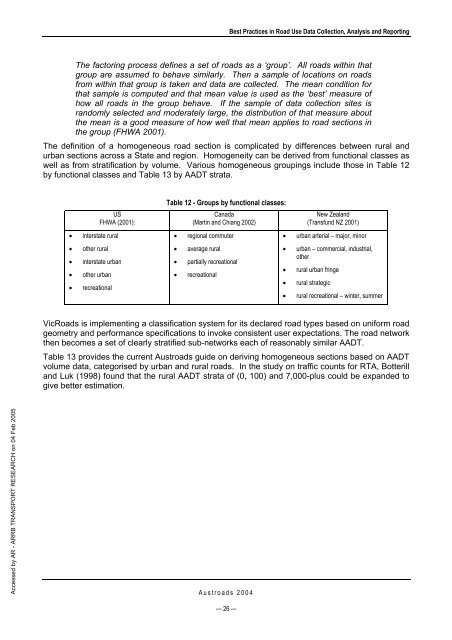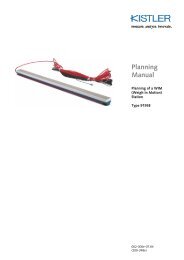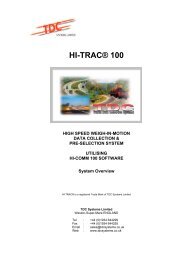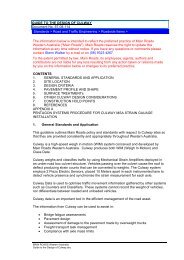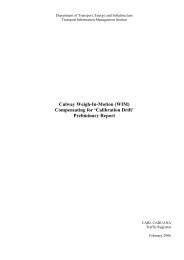AP-G84/04 Best practice in road use data collection, analysis ... - WIM
AP-G84/04 Best practice in road use data collection, analysis ... - WIM
AP-G84/04 Best practice in road use data collection, analysis ... - WIM
Create successful ePaper yourself
Turn your PDF publications into a flip-book with our unique Google optimized e-Paper software.
Accessed by AR - ARRB TRANSPORT RESEARCH on <strong>04</strong> Feb 2005<br />
Aust<strong>road</strong>s 20<strong>04</strong><br />
— 26 —<br />
<strong>Best</strong> Practices <strong>in</strong> Road Use Data Collection, Analysis and Report<strong>in</strong>g<br />
The factor<strong>in</strong>g process def<strong>in</strong>es a set of <strong>road</strong>s as a ‘group’. All <strong>road</strong>s with<strong>in</strong> that<br />
group are assumed to behave similarly. Then a sample of locations on <strong>road</strong>s<br />
from with<strong>in</strong> that group is taken and <strong>data</strong> are collected. The mean condition for<br />
that sample is computed and that mean value is <strong>use</strong>d as the ‘best’ measure of<br />
how all <strong>road</strong>s <strong>in</strong> the group behave. If the sample of <strong>data</strong> <strong>collection</strong> sites is<br />
randomly selected and moderately large, the distribution of that measure about<br />
the mean is a good measure of how well that mean applies to <strong>road</strong> sections <strong>in</strong><br />
the group (FHWA 2001).<br />
The def<strong>in</strong>ition of a homogeneous <strong>road</strong> section is complicated by differences between rural and<br />
urban sections across a State and region. Homogeneity can be derived from functional classes as<br />
well as from stratification by volume. Various homogeneous group<strong>in</strong>gs <strong>in</strong>clude those <strong>in</strong> Table 12<br />
by functional classes and Table 13 by AADT strata.<br />
US<br />
FHWA (2001):<br />
• <strong>in</strong>terstate rural<br />
• other rural<br />
• <strong>in</strong>terstate urban<br />
• other urban<br />
• recreational<br />
Table 12 - Groups by functional classes:<br />
Canada<br />
(Mart<strong>in</strong> and Chiang 2002)<br />
• regional commuter<br />
• average rural<br />
• partially recreational<br />
• recreational<br />
New Zealand<br />
(Transfund NZ 2001)<br />
• urban arterial – major, m<strong>in</strong>or<br />
• urban – commercial, <strong>in</strong>dustrial,<br />
other<br />
• rural urban fr<strong>in</strong>ge<br />
• rural strategic<br />
• rural recreational – w<strong>in</strong>ter, summer<br />
VicRoads is implement<strong>in</strong>g a classification system for its declared <strong>road</strong> types based on uniform <strong>road</strong><br />
geometry and performance specifications to <strong>in</strong>voke consistent <strong>use</strong>r expectations. The <strong>road</strong> network<br />
then becomes a set of clearly stratified sub-networks each of reasonably similar AADT.<br />
Table 13 provides the current Aust<strong>road</strong>s guide on deriv<strong>in</strong>g homogeneous sections based on AADT<br />
volume <strong>data</strong>, categorised by urban and rural <strong>road</strong>s. In the study on traffic counts for RTA, Botterill<br />
and Luk (1998) found that the rural AADT strata of (0, 100) and 7,000-plus could be expanded to<br />
give better estimation.


